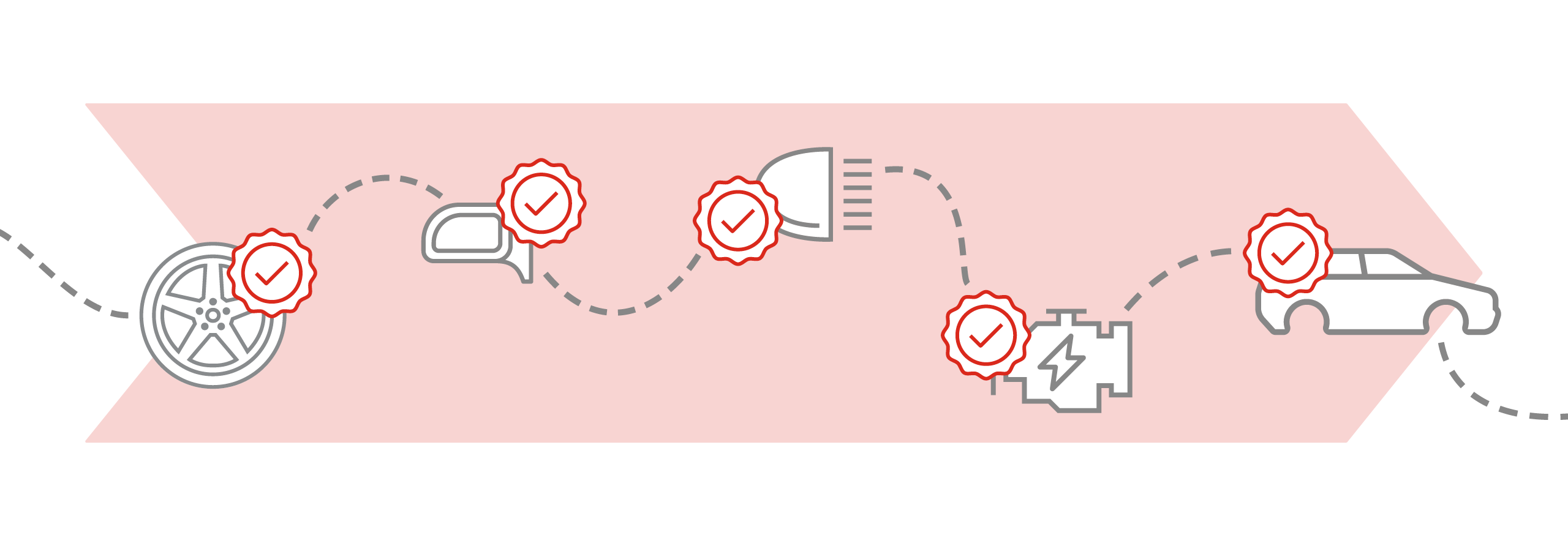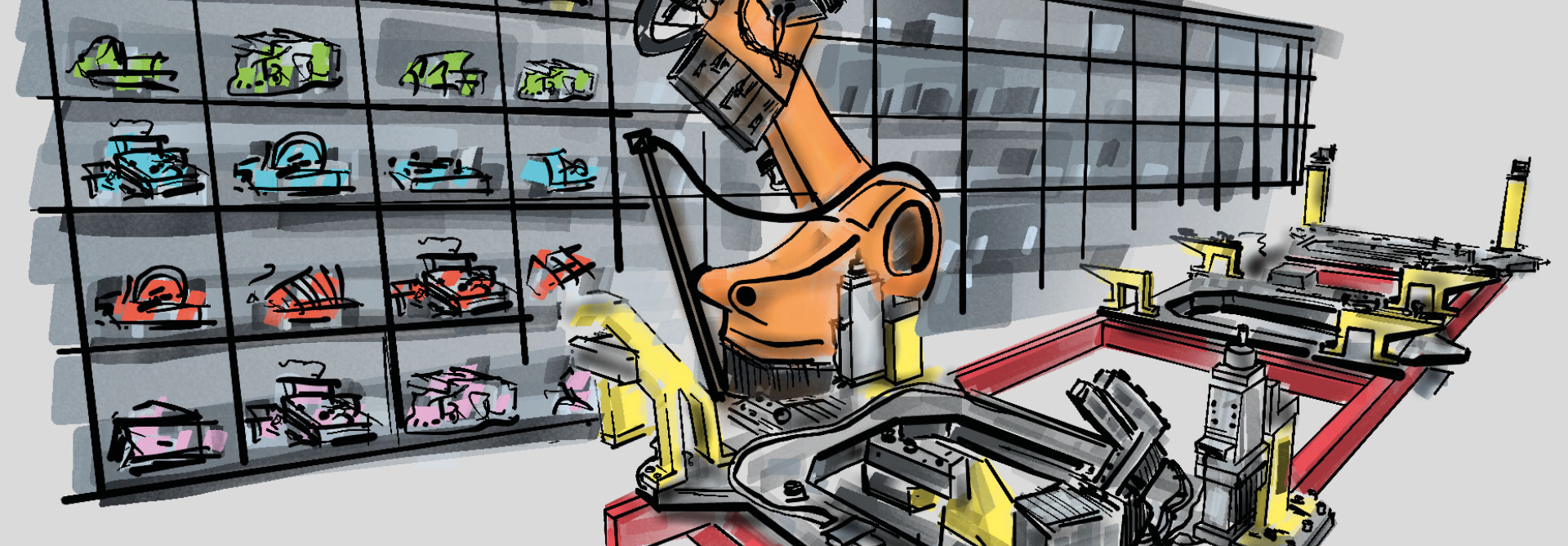
Get Started - the Search for Manufacturing Partners + Your Free Guide
- Karl Hartl
- April 17, 2022
- 8-min read
Although it has never been a better time to enter the vehicle market, new players still face major challenges e.g. to find a suitable manufacturing partner. Building a new vehicle is a highly complex task, with the level of complexity increasing to an exponential degree when the project moves to serial production.
That’s why many new entrants decide to team up with manufacturing partners to circumvent some of the most difficult challenges and to speed up their time-to-market.
TABLE OF CONTENT
> Chapter 1: Why you need a vehicle manufacturing partner
> Chapter 2: What to look for in an partner to industrialize your vehicle project
> Chapter 3: Find the ideal work split with your vehicle manufacturing partner
> Chapter 4: Organizational evolution over the course of your market entry
> Chapter 5: 5 critical challenges of vehicle production
> Conclusion
CHAPTER 1: WHY YOU NEED A VEHICLE MANUFACTURING PARTNER
New entrants have two options when it comes to planning the production of a new vehicle: Either they set up a factory by themselves, or they look for a contract manufacturer and outsource their production. What are the benefits and potential challenges for a new entrant?
The Requirements for Building an Automotive Factory
The requirements for establishing an automotive production chain consist of a multitude of complex tasks involving several sub-tasks and deliverables. In addition, many external factors also come into play:
Site selection alone encompasses a wide variety of tasks. The location should already possess a favorable legal landscape, such as the availability of funding programs or a reasonable wage level. It should also be situated in a politically stable region. Legal frameworks regarding security and quality standards or climate regulations also need to be factored in.
Any site is also heavily dependent on the availability and skill set of the local workforce. Suppliers are another key factor for each production site. Ideally, the chosen location should be in proximity to all of its core suppliers to ensure a seamless supply chain and short transport distances from supplier to factory.
Why Contract Manufacturing is Beneficial
Partnering up with contract manufacturers effectively allows new entrants to gain access to an already established production site, including an existing skilled workforce and live production and organization processes:
The key benefit of contract manufacturing (with a partner) is the fact that contract manufacturers not only take over the vehicle production but also the whole process of industrializing the vehicle concept. This includes the conception of the factory, the process and system planning, as well as the control and monitoring of the system installation.
In addition, all of the production and organizational processes have already been set up and tested. This means that new entrants can benefit from fully productive facilities right away.
Another important benefit is that contract manufacturers can provide the entire infrastructure needed to produce the vehicles. Partnering up usually enables them to access an established production ecosystem. Of course, this also includes all of the relevant quality, technological, and sustainability standards.
Lastly, a new entrant will also have a considerably easier time locating a suitable supply network, as they can draw on their partner’s existing supply network.
This allows new entrants not only to focus on building their brand; it also shortens their time-to-market and significantly reduces risks – two factors which might profoundly impact their chances of survival in the market.
Deciding on the Ideal Degree of Cooperation
Of course, contract manufacturing does not restrict a new entrant to any specific model of cooperation. Depending on the services a contract manufacturer provides, they may also cooperate on a smaller scale. New entrants may choose to build their own facilities with the contract manufacturer only providing the necessary workforce or organizational support.
For example, it is common for new entrants to seek a manufacturing partner to assist them in conducting the feasibility study required during the early concept development phase. The partner may then support the new entrant with establishing their own production site to speed up some aspects of the process.
Potential Challenges With Contract Manufacturing Partner
When teaming up with a contract manufacturer, there are some issues that need to be sorted out to ensure the cooperation is successful:
It’s important to determine the right work split between the two partners beforehand. Both parties need to exactly know who is in charge of which tasks and who bears responsibility for which decisions. Plus, the new entrant may fear a loss of agency over their own vision. In some instances, a contract manufacturer may bind the cooperation with restrictions regarding development and manufacturing. This can be an issue for new entrants with unique requirements (in terms of platforms, for instance).
However, all of those challenges can be circumvented if both parties communicate clearly and openly early on in the process.
This strategy, however, requires the contract manufacturing partner to have a global presence.
CHAPTER 2: WHAT TO LOOK FOR IN A PARTNER TO INDUSTRIALIZE YOUR VEHICLE PROJECT
Teaming up with a production partner is a great option for a quick and asset-light market entry. But how do new entrants find the right partner for their endeavor? Chinese, European, and U.S. markets alike are inhabited by several manufacturers seeking to attract new entrants. In general, these can be categorized into two large groups:
OEMs (Original Equipment Manufacturers) are all car brands that possess their own manufacturing facilities and therefore build the vehicles they sell (mostly) on their own.
Brand-independent manufacturing partners supply OEMs through a broad range of services in terms of engineering and manufacturing tasks. They serve as suppliers for OEMs, but do not possess their own car brand. For example, Magna falls into this category.
OEMs: Full Service but Tight Presets
The key advantage of contracting an OEM is the fact that their service extends past the serial production stage. This means that a new entrant who teams up with an OEM might also have access to its after-sales network, such as spare parts and service, and a faster time-to-market since very few processes need to be established from the ground up.
In exchange, a new entrant very likely will need to make some considerable compromises in terms of the styling or the features they may have envisioned. OEMs operate under their own brand(s) and therefore also possess factories and tools specialized in manufacturing and development those vehicles specifically for the OEM’s needs. New entrants, unless they have the plans and finances necessary to produce in high quantities, must therefore match their vehicle according to the OEM’s requirements.
Manufacturing Partners: Limited Post-release Support but a Large Degree of Flexibility
Unlike OEMs, manufacturing partners do not actively deliver their vehicle to the end-user. This means that they don’t possess an after-sales network – and consequently do not offer this service to new entrants either. For the new entrant, this means that they need to establish a vendor network and, more importantly, an after sales-service network by themselves.
In return, the biggest advantage of a manufacturing partner by far is the flexibility they can offer a new entrant. A manufacturing partner adapts their infrastructure according to the planned vehicle, not vice-versa.This means that compartments such as the vehicle platform, supplier networks, and features can be aligned much closer with the new entrant’s vision.
From coming up with the idea for their vehicle to feasibility and concept phases, prototyping, supply management, and vehicle development, all the way through to serial production, a manufacturing partner offers comprehensive services to new entrants – including quality management and all organizational processes, as well as facilities, equipment, staff, and the invaluable asset that is experience. All of this results in a new entrant who can retain the maximum amount of freedom in making their vision a reality and establishing their branding, marketing, and sales strategies.
How do I Partner Up with a Contract Manufacturer?
By far the most important thing any contract manufacturer will ask for is quite simply: a valid business plan. Manufacturers value a thoroughly prepared business plan that outlines how the new entrant plans to finance their endeavor. That’s why it is beneficial to showcase a sizable portfolio of investors and, ultimately, assure that the business partners involved can be relied on to make payments.
Aside from the financial aspects of the business plan, it is also beneficial if the new entrant is clear on the exact features and traits they want to implement into their vehicle.
CHAPTER 3: FIND THE IDEAL WORK SPLIT WITH YOUR VEHICLE MANUFACTURING PARTNER
Just as important as finding the right manufacturing partner is defining a clear and suitable work split with them. The following guide will help you find a good solution.
Setting the Framework for Cooperation
To ensure a seamless procedure from the get-go, the new entrant should specify their exact requirements for the manufacturer in advance. These specifications are summarized in a product requirements document (PRD) and encompass the following key questions:
- What is the current status of the project?
- What the new entrant aiming to achieve?
- Which stakeholders do they have in mind?
- What are the (non-)functional requirements of the product?
- Which risks and constraints does the new entrant expect and how do they plan to circumvent them?
- How do they intend to realize the project in terms of organization?
- In what scope does the new entrant intend to produce?
- How do they plan to pay the manufacturer?
This will allow the partner to then convert these points into technical specifications highlighting their intended roadmap for the industrialization process. All of this is necessary to establish a baseline for both parties from which they can further specify the key questions.
The General Work Split between New Entrant and Manufacturing Partner
Determining the exact work split between both parties is largely dependent on the wishes of the new entrant and to what degree their chosen partner can fulfill them. Although the devil lies in the details, both parties’ roles can still de defined in a rudimentary manner:
The Manufacturing Partner
As the contract manufacturer already possesses both profound experience and the infrastructure necessary for industrializing a vehicle, they will also cover the technical aspects of the vehicle’s concept, development, and production phases. Additionally, as an established player within the market, the partner will provide an environment containing all of the external partners needed to transform the new entrant’s idea into a functioning vehicle:
Operative Development, and Prototyping
Naturally, the industrialization process of the vehicle itself is covered by the production partner. In consultation with the new entrant, key deliverables and scheduling are determined and development of a testable prototype is conducted. Of course, testing the prototype is also included in the responsibilities of the production partner.
Serial Production of the Vehicle
After the developed prototype has met security and quality standards, the key challenges of the SOP have been addressed, the schedule has been defined, and all of the development targets have been fulfilled, the partner will also execute the production phase of the vehicle.
Supply Network
The supply network is arguably one of the more “gray” areas in terms of responsibilities. In general, organizing the necessary manufacturing tools and resources for the vehicle platform (and the vehicle as a whole) are the contract manufacturer’s responsibility. However, building up the supply network of parts and components may also be handled by the new entrant. Ultimately, the exact areas of responsibility depend on the specific mode of cooperation the two partners agree upon.
Security Management and Quality Control
Security management encompasses ensuring that the vehicle meets the necessary driver’s security standards to the vehicle to be approved. Quality control includes all further improvisation and adaptation processes necessary for the vehicle to not only meet the set quality standards of its target market, but also all of the requirements for guaranteeing full functionality of all the features envisioned by the new entrant as well as meeting the expectations of customers, the new entrant, and the production partner themselves.
The New Entrant
With the contract manufacturer handling the key vehicle production, the new entrant will be free to concentrate their efforts on establishing and developing their brand – marketing and sales strategies, public relations, branding, and so on. Of course, within the automotive process, there are still several tasks that the new entrant has to deal with:
The vehicle’s styling is still the responsibility of the new entrant, who will provide the visuals for their vehicle. There are certain aspects of design and styling that may require discussions and changes nonetheless, mostly regarding technical or legal guidelines.
The final part of the supply chain, the distribution network, has to be organized by the new entrant as well. This means that the new entrant must either establish a vendor network or set up the necessary sales infrastructure by themselves.
After-sales management is also part of the new entrant’s responsibility. This includes any tasks regarding insurance, maintenance, repair and rescue services, as well as keeping customer relations and brand loyalty at a positive level.
While the cooperation between the two partners should always stay on equal footing, the new entrant still retains their position as a customer. In other words, they will have the last say in any adaptations made to the vehicle itself or its development plan. The new entrant will also be responsible for keeping the project moving by serving as the main interface between all of the parties involved.
Communication is Key
Allocating the general responsibilities of both parties is one step of ensuring a successful partnership. It is helpful to keep the contrast in the backgrounds and levels of experience between the two partners in mind. Most new entrants will need a bit of time to learn the inner workings and the “language” of the automotive industry. Having thorough discussions and communicating openly will avoid complications later down the line.
CHAPTER 4: ORGANIZATIONAL EVOLUTION OVER THE COURSE OF YOUR MARKET ENTRY
Over the evolution of an automotive project, the organization behind it will naturally grow and evolve as well. In the next section, we will discuss the evolution of average team size, responsibilities, project scale, and the resulting complexity phase by phase.
Concept Development Phase: Outlining the Future Project
At the start of a vehicle project, most tasks will remain theoretical. During this early project phase, the most important task for the new entrant is to build the core team behind their automotive vision. This core team’s key responsibility lies in defining what direction the vehicle project should pursue, what features should be implemented, technical specification, and, of course, targets and strategies for marketing and branding.
This early phase also sees the core suppliers and investors identified and the preparation work for conducting a feasibility study done. This study will require the comparatively largest amount of effort in this early phase, as it serves as the definitive conversion of the new entrant’s marketing goals into feasible technical tasks, deliverables, and milestones. It should ideally be conducted with a technical partner (a future contract manufacturer, for instance) to ensure the procedure is followed correctly.
Team Size During the Concept Development Phase
Assuming that all of the vehicle manufacturing-related tasks are covered by a contract manufacturer, the core team behind the new entrant will consist of approximately 20–30 people during concept development stage. This team should possess a broad and diverse range of technical, marketing, and project management skills. Aside from a CEO, this team should also include:
- A CFO and a CTO
- Personnel for Financing, IT, Project/Program Management and HR to manage the new entrant’s organization.
- A Launch Management expert to guarantee a seamless market entry
- Marketing and Branding experts
- A Purchasing department
- Sales and After-sales departments
Ideally, the team also includes people who already have experience with the automotive sector. And lastly, the team should consist of people who both possess an entrepreneurial mindset as well as experience in the automotive market.
Main Deliverables of the Concept Development Phase
CHAPTER 5: 5 CRITICAL CHALLENGES OF VEHICLE PRODUCTION
Bringing a new automotive company to the market is a challenging endeavor – and success is not guaranteed. However, with thorough preparation, the initial challenges can be overcome. Here are the five most critical ones.
1. Determining the Exact Production Volume
While it may sound easy to set the number of vehicles produced annually (or in total), this number is far more uncertain than you might assume. Since new entrants are completely new to the vehicle market, they cannot rely on past data of their brand's market potential. Estimates about the production volume are therefore likely to deviate from the actual demand for the vehicle.
Estimating the production volume is not only quite challenging but also has a huge impact as any changes have a profound knock-on effect on the entire vehicle production plan. There is a large difference between producing 5,000 vehicles and producing 50,000 vehicles per year in terms of the time and resources required. Producing higher volumes than estimated might result in capacity problems, while smaller volumes will lead to profitability problems and a higher cost per unit.
2. Finalizing the Vehicle Concept and Establishing Key Suppliers
While there are some elements of the vehicle in which adaptations can be made easily, it is vital for the overall basis of the vehicle to be decided upon. Most notably, its chassis, the E/E (electrical/electronic) architecture and the drivetrain should be specified after the idea phase, as changing those components later will cause heavy delays and cost increases.
Organizing key suppliers for both the vehicle parts and the tools necessary for assembly can be a tenuous task, particularly if a new entrant does not intend to produce in large volumes. The onboarding of key suppliers is a very common cause for delays in the project, which makes it even more important that a new entrant can combine flexibility and willingness for compromises when building their supply base.
3. Increased Complexity During the Concept Phase
Arguably the biggest showstopper of any vehicle production is the fact that most of the vehicle concept, processes, and requirements cannot be established one after the other. Rather, once the vehicle idea has been decided upon and validated, things such as the production environment, supply base, tools, the workforce and finances needed, the organizational and production processes, potential vendors, as well as marketing, sales, and branding strategies all need to be established and set in motion at the same time. All of this requires extremely high one-time expenses as well as an intricately planned schedule, and lots of personal commitment and endurance.
4. Late-stage Additions to the Vehicle
It is very likely that the conditions under which the vehicle is produced change over the course of its industrialization. During the timespan of approximately three years between feasibility and serial production, it may happen that features of the vehicle need to be added or adapted to meet changing customer requirements or divert from a new competitor with a similar USP.
However, even seemingly mundane adaptations drastically alter the industrialization process of a vehicle. Each new feature or change requires the overall vehicle layout to be adapted and therefore might impact the assembly sequence.
It can be difficult to avoid such unexpected changes during industrialization. As stated above, some of the key reasons for these adaptations are beyond the control of the new entrant’s capabilities. However, their frequency can be reduced significantly by ensuring preparation work has been done thoroughly and that you have a finalized vehicle concept, where changes are only made if they are needed.
5. Keeping Partners, Investors, and Yourself Invested
As highlighted in the previous point, the entire road from transforming an idea to a serial vehicle takes a long time. During this journey, there will be critical points in time where the project will demand a lot of commitment and energy on the part of the new entrant. In particular, the large increase in complexity previously highlighted will be one of the most time-consuming and costly periods of the entire industrialization process. With cost requirements and the general workload increasing exponentially, this phase is also a test of the new entrant’s resilience – and how well they can keep their partners invested.
A major investor or key supplier leaving will heavily delay the project at best and spell its termination at worst, which is why it is even more important for a new entrant to keep their own commitment to the project high and minimize their potential for failure to the greatest extent they can. By conveying a sense of stable progression and foresight in the face of potential risks and uncertainties, suppliers and investors will more likely stick with the project throughout its more challenging phases.
Way to Prevent Failure
While many of the challenges are either unpredictable or are simply unchangeable factors, there are ways to prevent failure: Looking for investors and suppliers early mitigates the complexity hub during the concept phase and fosters a reliable network of people committed to the project. A clear and detailed definition of the vehicle also helps to avoid adaptations later on in the industrialization process.
Ultimately, the best option for preventing many of the difficulties that crop up in the industrialization process is to cooperate with an established contract manufacturer.
An established player can solve questions such as organizational processes, scheduling, as well as making the platform or production volume of the vehicle easier.This is because a contract manufacturer already has a fully functioning production ecosystem and the manufacturing experience to match. By using these assets, the new entrant can significantly reduce their financial burden, speed up time-to-market, and follow an overall safer path towards making their automotive vision a reality.
MANUFACTURING PARTNERS - CONCLUSION:
For many reasons, entering the automotive market works best with the support of a development and manufacturing partner. Using the experience and the facilities of an experienced company helps new entrants with a faster market entry with lower risks and costs – without sacrificing creative freedom.
Stay connected with Inside Automotive!

Karl Hartl
Karl Hartl has been Director Sales at Magna Steyr since 2015. He joined Magna in 1998 and held several leading positions in Engineering, Program Management and Sales.
We want to hear from you
Send us your questions, thoughts and inquiries or engage in the conversation on social media.
Related Stories

Before Entering the Market, Certification is Required: Homologation for non-European vehicles
Blog

Moving Forward Without Letting Go: How Flexible Manufacturing Advances the Mobility Revolution
Blog
Stay connected
You can stay connected with Magna News and Stories through email alerts sent to your inbox in real time.

